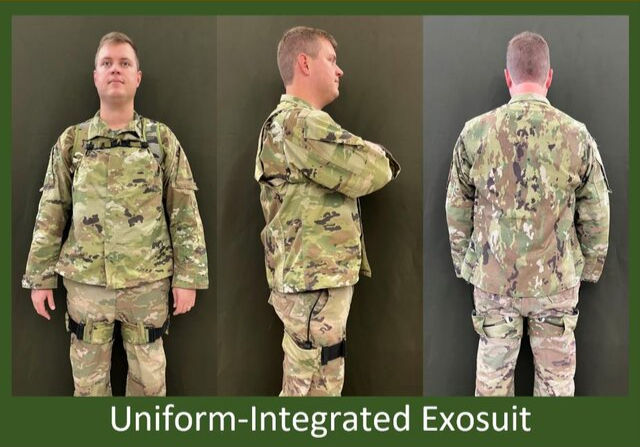
SOFT
FINE
GOODS
CONSULTING
BACK TO THE
WEARABLE TECH
PORTFOLIO
UNIFORM INTERGRATED EXOSUIT
For Vanderbilt
The Zelik Lab at Vanderbilt University wanted to create a back exosuit that could fully be integrated into clothing and that had the clutch (what engages and disengages the exosuit) placed on the leg. They also wanted attach the elastic bands to the back plate using only soft components that allowed for quick swapping the bands. This project was full of difficult design problems as back exosuits typically have the clutch on the back, there was no method for softly attaching bands to the back available on the market, and it’s difficult to successfully integrate a fully functional exosuit into clothing.
MY ROLE:
I was tasked with creating a soft quick-swap method for attaching the elastic bands, determining how to comfortably integrate the clutch into the pants, and comfortably integrating the harness into the shirt. I did all of the patterning, rapid prototyping, construction,and clothing integration.
DESIGN PROCESS:
This proof-of-concept project flipped the conventional exosuit paradigm on its head. Instead of placing the clutch on the back, we challenged ourselves to relocate it to the leg — introducing new ergonomic, mechanical, and soft goods integration complexities. I led the design, patterning, and construction for every aspect of the soft goods system.
One of the most technically ambitious components was my fully soft, quick-swap attachment system for the elastic bands — designed without velcro or rigid hardware, yet swappable in under 30 seconds. At the time, nothing like this existed. It preserved assistive integrity while remaining lightweight, compact, and fully soft — avoiding the bulk and rigidity of conventional attachment systems.
Another key challenge was reengineering the uniform itself. This wasn’t clothing placed over an exosuit — it was the exosuit. I engineered the pants and shirt to act as standalone uniform garments while also delivering the load-resisting and motion-enabling structure of a full exosuit. I embedded structural plastic slats and tensioning systems without disrupting don/doff routines, pocket access, or tactical function.
The system underwent motion trials and lab testing to validate comfort, load transfer, and fit — all while keeping the design nearly indistinguishable from a standard military uniform.
DESIGN PHILOSOPHY:
My design philosophy here was: form follows function — and function must be dual-purpose. In this case, I wasn’t just designing an exosuit. I was designing a uniform. That meant every component had to pull double duty — supporting biomechanics while upholding the standards of comfort, wearability, and visual conformity critical in military environments.
I prioritized:
-
Seamless integration over superficial layering
-
Comfort in both engaged and relaxed modes
-
Innovation grounded in constraint
The quick-swap band attachment system exemplifies this: soft, minimal, non-stretch, and non-intrusive — a truly novel solution designed within tight boundaries.
This project was about proving that soft goods could carry more of the exosuit load — literally and conceptually. The result? A uniform that is a suit of support — not something extra to carry, but something fundamentally reimagined.





